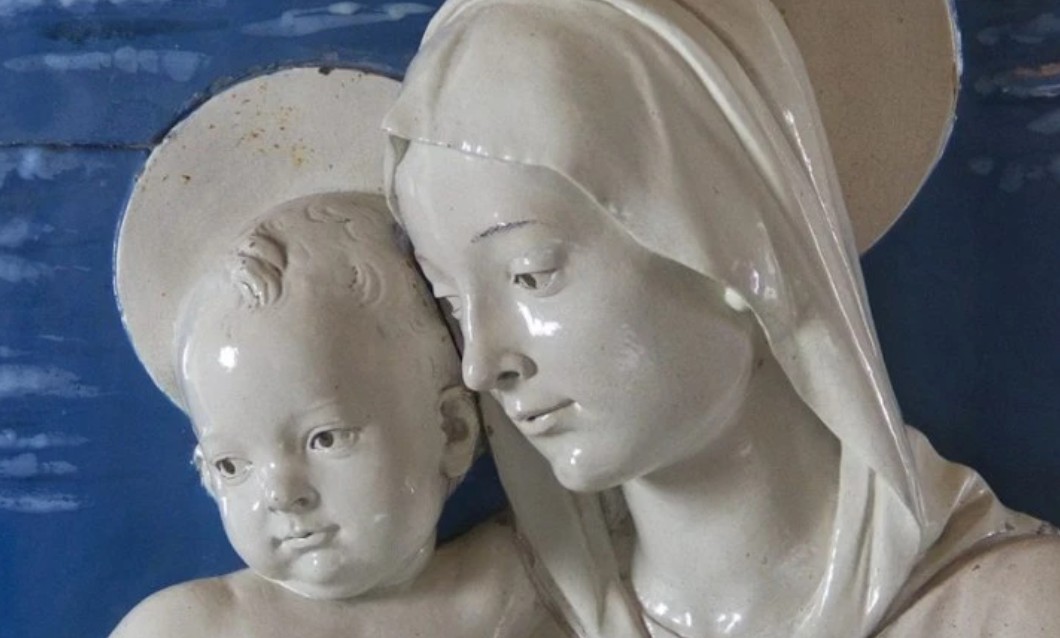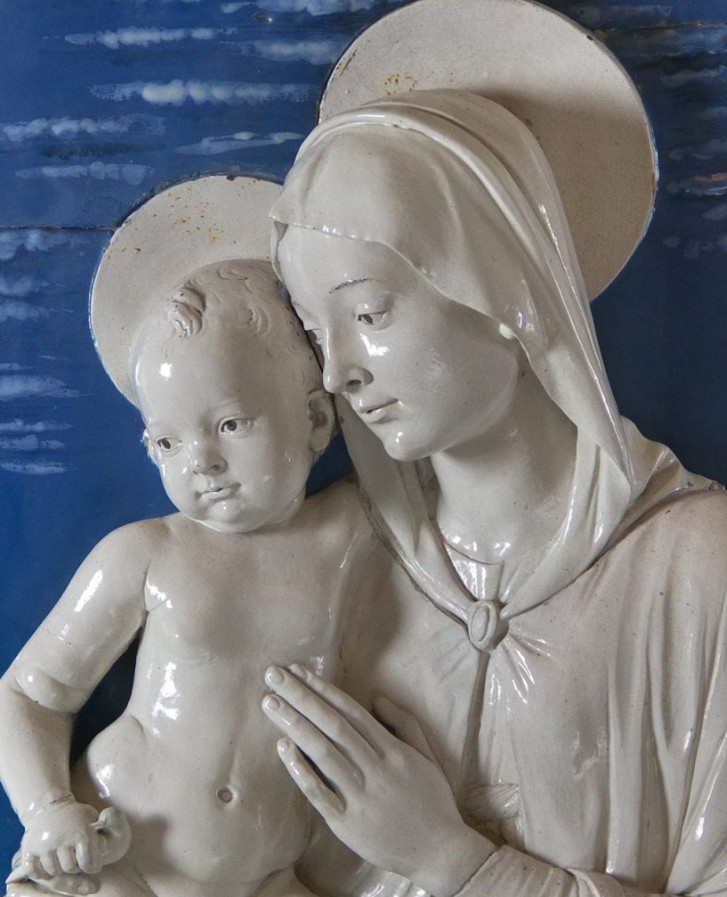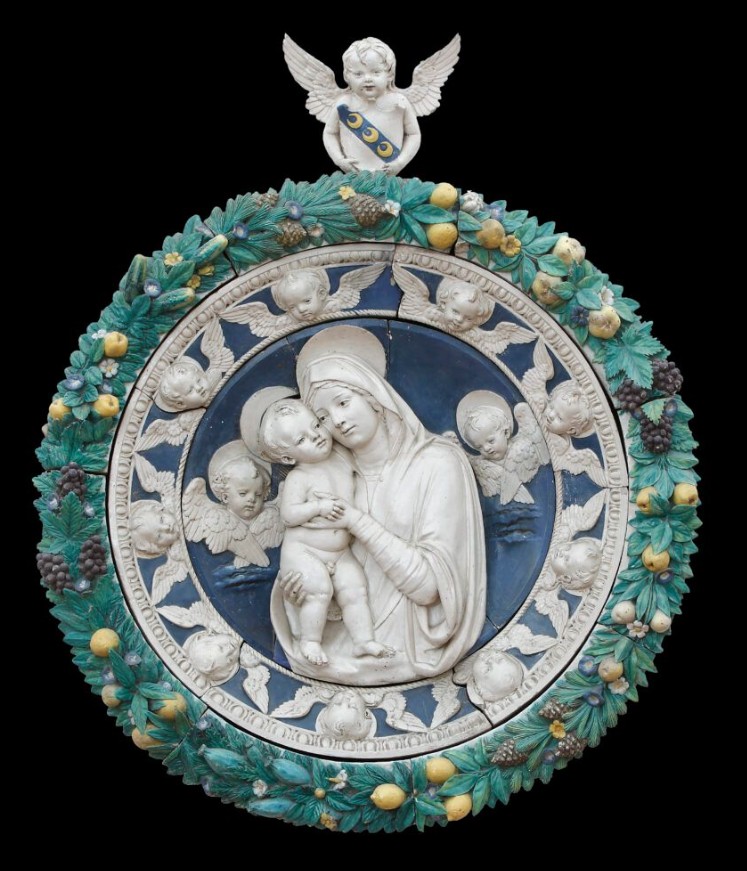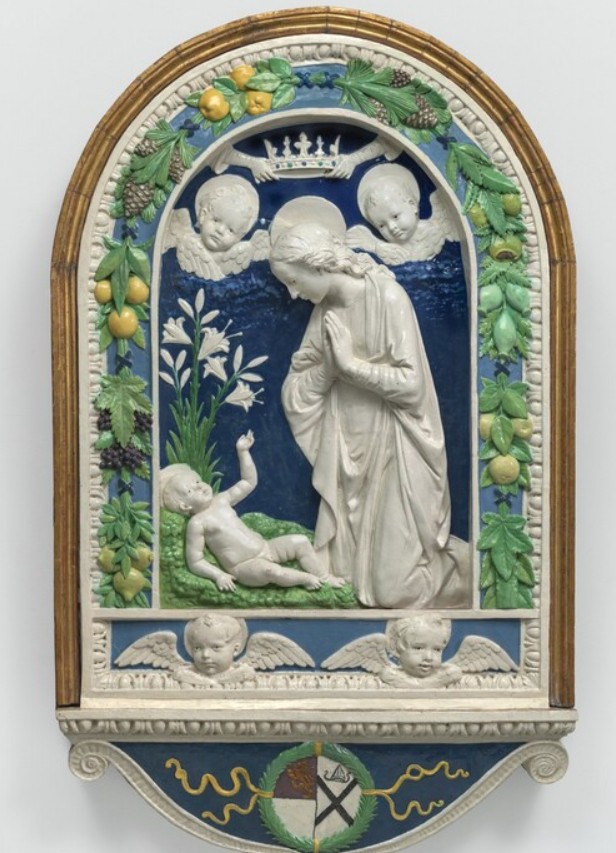500 anni fa, il 4 agosto del 1525, passava a miglior vita Andrea della Robbia, nipote del più celebre Luca della Robbia.
Andrea non solo aveva ereditato la bottega e la tecnica della terracotta invetriata, ma la migliorò adeguandola al suo personalissimo stile
La vita e l’eredità artistica
Andrea della Robbia era nato nella stessa città che lo vide morire il 20 ottobre del 1435. Ebbe modo di formarsi nella bottega dello zio Luca, imparando l’arte della terracotta invetriata.
Questa tecnica, inventata da Luca, consisteva nel rivestire sculture in terracotta con uno smalto stannifero ovvero a base di stagno in grado di rendere le opere resistenti agli agenti atmosferici, donandogli una lucentezza mai vista prima.
Sebbene Luca prediligesse una tavolozza più sobria, concentrandosi sul bianco e sull’azzurro, Andrea ampliò la gamma cromatica, introducendo spesso colori più ricchi e ispirandosi a pittori dell’epoca come Filippino Lippi.
Dopo la morte dello zio Luca avvenuta nel 1482, Andrea ereditò la bottega e ne gestì il successo per i decenni a seguire. La sua abilità e la fama della bottega portarono a una produzione vastissima, che spesso richiedeva il coinvolgimento di numerosi collaboratori. Andrea si sposò nel 1465 ed ebbe dodici figli, cinque dei quali intrapresero a loro volta la carriera di scultori, il più talentuoso dei quali fu Giovanni della Robbia, che continuò l’attività di famiglia con grande successo.
Alcune delle opere principali di Andrea della Robbia
Le opere di Andrea della Robbia, come accennato prima, rappresentano un’evoluzione della tecnica robbiana. Tra i suoi capolavori più noti e amati si trovano per esempio i noti Tondi dello Spedale degli Innocenti che raffigurano bambini in fasce su sfondo azzurro e decorano la loggia dell’ospedale.
Andrea della Robbia realizzò diverse grandi tavole e pale d’altare per il santuario francescano della Verna. Tra queste, spiccano l’imponente Crocifisso tra angeli e la pala dell’Assunzione della Vergine.
Al Museo del Bargello di Firenze è custodito il Ritratto di fanciulla, una sua opera giovanile che rivela già la sua abilità nel ritratto e l’uso di una terracotta invetriata policroma.
Per il momento il sempre vostro Michelangelo Buonarroti vi saluta dandovi appuntamento ai prossimi post e sui social.
Articoli correlati
Five hundred years ago, on August 4, 1525, Andrea della Robbia, nephew of the more famous Luca della Robbia, passed away. Andrea not only inherited the workshop and the glazed terracotta technique, but also refined it, adapting it to his own unique style.
His Life and Artistic Legacy
Andrea della Robbia was born in the same city where he died on October 20, 1435. He trained in his uncle Luca’s workshop, learning the art of glazed terracotta.
This technique, invented by Luca, consisted of coating terracotta sculptures with a tin-based glaze that made the works weather-resistant, giving them a previously unseen shine.
Although Luca favored a more sober palette, focusing on white and blue, Andrea expanded the color palette, often introducing richer colors and drawing inspiration from contemporary painters such as Filippino Lippi.
After the death of his uncle Luca in 1482, Andrea inherited the workshop and managed its success for the following decades. His skill and the workshop’s fame led to a vast production, often requiring the involvement of numerous collaborators. Andrea married in 1465 and had twelve children, five of whom also pursued careers as sculptors, the most talented of whom was Giovanni della Robbia, who continued the family business with great success.
Some of Andrea della Robbia’s major works
The works of Andrea della Robbia, as mentioned above, represent an evolution of the Della Robbia technique. Among his most famous and beloved masterpieces are the celebrated Tondi of the Spedale degli Innocenti, which depict swaddled children against a blue background and decorate the hospital’s loggia.
Andrea della Robbia created several large panels and altarpieces for the Franciscan sanctuary of La Verna. Among these, the imposing Crucifix with Angels and the altarpiece of the Assumption of the Virgin stand out.
The Bargello Museum in Florence houses the Portrait of a Young Girl, an early work that already reveals his skill in portraiture and his use of polychrome glazed terracotta.
For now, Michelangelo Buonarroti bids you farewell and says he will see you in future posts and on social media.
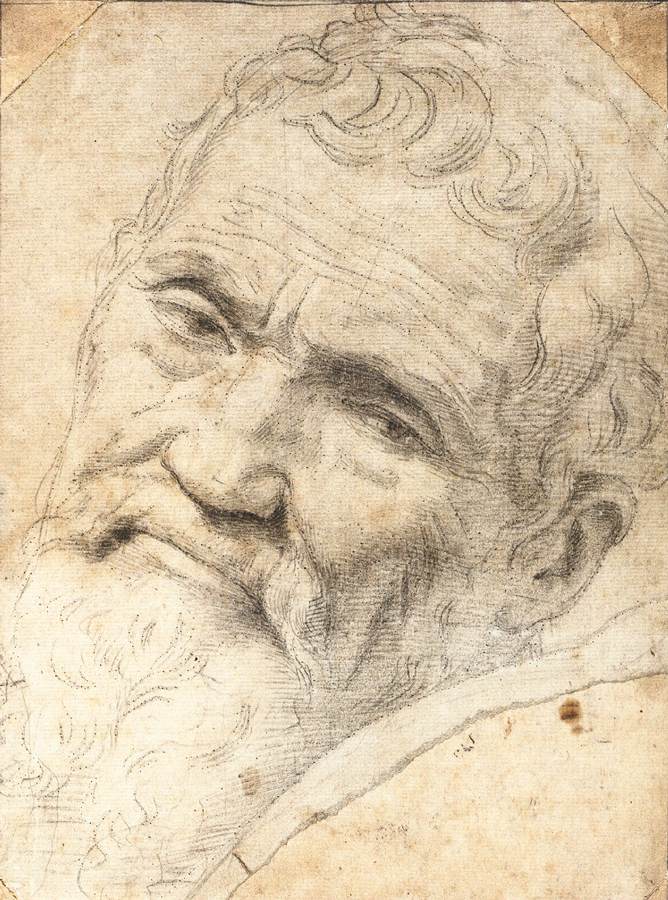
Sostienici – Support Us
Se questo blog ti piace e ti appassiona, puoi aiutarci a farlo crescere sempre più sostenendoci in modo concreto condividendo i post, seguendo le pagine social e con un contributo che ci aiuta ad andare avanti con il nostro lavoro di divulgazione.
.
ENGLISH: If you like and are passionate about this blog, you can help us make it grow more and more by supporting us in a concrete way by sharing posts, following social pages and with a contribution that helps us to move forward with our dissemination work.
Pubblicato da Michelangelo Buonarroti
ENG: Who doesn’t know Michelangelo Buonarroti? Sculptor, painter, architect and refined poet. But who is his alter ego that gives him a voice on the blog michelangelobuonarrotietornato.com and on the connected social networks? Antonietta Bandelloni, a Tuscan art blogger and writer passionate about art. For over ten years she has devoted himself to the in-depth study of Michelangelo Buonarroti’s works and tormented existence.
To contact Antonietta Bandelloni for collaborations, invitations, sponsorships or other send an email directly to antoniettabandelloni@gmail.com
Vedi tutti gli articoli di Michelangelo Buonarroti
